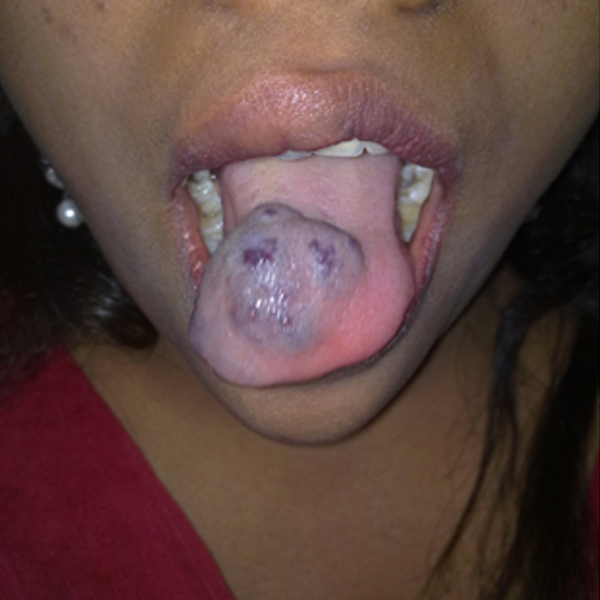A hemangioma is another type of birthmark. It is the most common benign (non-cancerous) tumor of the skin. Hemangiomas may be present at birth (faint red mark) or may appear in the first months after birth. A hemangioma is also known as a port wine stain, strawberry hemangioma, and salmon patch. About 83 percent of hemangiomas occur in the head or neck area. Hemangiomas occur five times more often in females than in males.


Vascular malformations are present at birth and enlarge proportionately with the growth of the child. They do not involute spontaneously and may become more apparent as the child grows.
Most hemangiomas are not usually present at birth or are very faint red marks. Shortly after birth, however, they grow rapidly – often faster than the child’s growth. Over time, they become smaller (involute) and lighter in color. The process of involution may take several years.
The cause for vascular malformations and hemangiomas is usually sporadic (occurs by chance). However, they can also be inherited in a family as an autosomal dominant trait. Autosomal dominant means that one gene is necessary to express the condition, and the gene is passed from parent to child with a 50/50 risk for each pregnancy. Males and females are equally affected and there is great variability in expression of the gene. In other words, a parent may unknowingly have had a hemangioma because it faded, but the child is more severely affected. The family may not come to the attention of a geneticist until the birth of the child with a more severe condition. Other relatives with mild expression of the gene are often discovered at that time, confirming autosomal dominant inheritance.
Vascular malformations and hemangiomas are a manifestation of many different genetic syndromes that have a variety of inheritance patterns and chances for reoccurrence, depending on the specific syndrome present.
If a vascular malformation or hemangioma is very large or affects the breathing system (airway or lungs) or another large organ system, it could be life-threatening. If a hemangioma has uncontrollable bleeding, this could also be life-threatening. Large and/or life-threatening lesions should be evaluated by a multidisciplinary team of specialists that includes plastic surgeons, dermatologists, phthalmologists, radiologists and other specialists, depending on what organs are involved.
Treatment for hemangiomas depends upon their size, location and severity. Treatment is usually not recommended for small, non-invasive hemangiomas, since they will become smaller (involute) on their own. However, hemangiomas that cause bleeding problems, feeding or breathing difficulties, growth disturbances, or impairment of vision may require medical or surgical intervention.
Treatment may include the following:
- Steroid medications
- Embolization of the blood vessels (injection of material into the blood vessels to block the blood inflow)
- Laser or surgical remova
